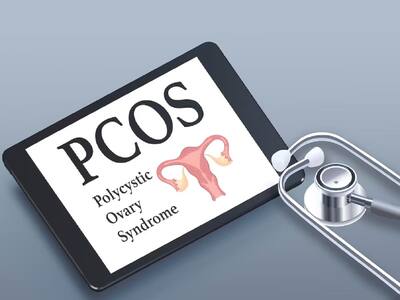
Regenerative medicine therapy and platelet-rich plasma (PRP) therapy offer new possibilities for patients with PCOD and PCOS. Read on to know more.
Polycystic Ovary Syndrome (PCOS) and Polycystic Ovary Disorder (PCOD) are prevalent endocrine disorders affecting millions of women worldwide. PCOS and PCOD can lead to a myriad of health issues, including irregular menstrual cycles, hormonal imbalances, ovarian cysts, and fertility problems. For years, traditional treatment options have focused on managing symptoms rather than addressing the underlying causes. However, a breakthrough in medical science has brought new hope to patients – regenerative medicine. PCOD and PCOS are hormonal disorders that occur due to imbalances in insulin and reproductive hormones. In PCOD, small cysts form on the ovaries, which disrupt their regular function. PCOS, on the other hand, is characterized by enlarged ovaries containing multiple small cysts. Both conditions share symptoms such as irregular periods, excess hair growth, weight gain, and acne.
Current Treatment Challenges
While treatments for PCOD and PCOS are available, they often target symptoms rather than address the root cause. Conventional therapies include hormonal birth control, anti-androgen medications, and insulin-sensitizing drugs. While these approaches can help manage symptoms, they may not work for everyone, and some patients may experience side effects.
The Rise of Regenerative Medicine
Regenerative medicine is an emerging field that focuses on harnessing the body’s natural healing capabilities to restore damaged tissues and organs. Regenerative medicine therapy and platelet-rich plasma (PRP) therapy are two key components of regenerative medicine that offer new possibilities for patients with PCOD and PCOS.
- Regenerative medicine Therapy
Regenerative medicine therapy involves using mesenchymal cells, which are undifferentiated cells capable of transforming into various cell types in the body. In the context of PCOD and PCOS, these cells can be used to target and repair damaged ovarian tissue, potentially restoring normal ovarian function. Studies have shown that cell therapy can regulate hormonal imbalances and reduce ovarian cyst formation, leading to improved menstrual regularity and increased chances of conception.
- Platelet-Rich Plasma (PRP) Therapy
PRP therapy is another regenerative approach gaining traction in treating PCOD and PCOS. It involves extracting a patient’s blood, concentrating platelets, growth factors, and other bioactive proteins, and then injecting the enriched plasma back into the ovaries. PRP stimulates cell growth, tissue repair, and vascularization, potentially aiding in the healing of damaged ovarian tissue and promoting follicle development.
READ RELATED: Burger King's New Homecoming Meal Is a Ton of Food For $10
Benefits of Regenerative Medicine for PCOD and PCOS Patients
- Targeted Treatment: Regenerative therapies focus on repairing the affected ovaries directly, addressing the root cause of PCOD and PCOS.
- Non-Invasive: Mesenchymal cell and PRP therapies are minimally invasive, with fewer risks and complications compared to surgical interventions.
- Personalized Approach: Each patient’s regenerative treatment plan is tailored to their unique medical history and needs.
- Potential Fertility Improvement: By restoring ovarian function, regenerative medicine may enhance fertility and increase the chances of successful conception.
Conclusion
Regenerative medicine offers a promising avenue for the treatment of PCOD and PCOS. While research is still ongoing, the potential of cell therapy and PRP therapy to restore ovarian function and alleviate symptoms brings newfound hope to millions of affected women. As medical science continues to advance, regenerative medicine could become a transformative solution in the fight against PCOD and PCOS, ultimately improving the quality of life for patients worldwide. However, it is essential to remember that this field is still in its early stages, and more extensive clinical trials and research are necessary to fully understand its efficacy and safety in treating PCOD and PCOS.
The article is written byDr Pradeep Mahajan, Regenerative Medicine Researcher & Founder of StemRx BioScience Solutions India.
Total Wellness is now just a click away.
Follow us on
Don’t Miss Out on the Latest Updates.
Subscribe to Our Newsletter Today!
window.addEventListener(‘load’, (event) => {
$(‘#commentbtn’).on(“click”,function(){
(function(d, s, id) { var js, fjs = d.getElementsByTagName(s)[0]; if (d.getElementById(id)) return; js = d.createElement(s); js.id = id; js.src = “//connect.facebook.net/en_US/sdk.js#xfbml=1&version=v2.3”; fjs.parentNode.insertBefore(js, fjs);}(document, ‘script’, ‘facebook-jssdk’));
$(“.cmntbox”).toggle();
});
});










